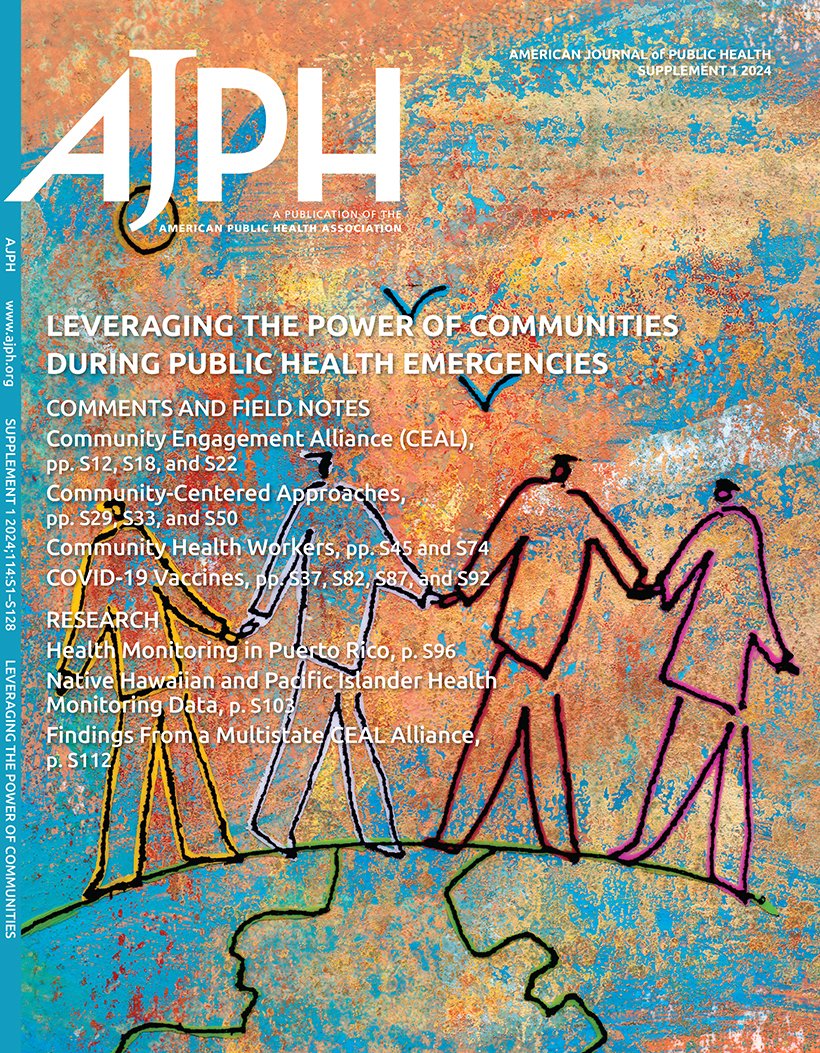纽约市有色人种变性女性的歧视与睡眠健康:来自TURNNT队列研究的横断面和纵向关联
IF 9.6
1区 医学
Q1 PUBLIC, ENVIRONMENTAL & OCCUPATIONAL HEALTH
引用次数: 0
摘要
目标。确定有色人种变性女性的歧视是否与睡眠健康有关。方法。我们纳入了来自纽约市“试图了解有色人种变性女性之间的关系、网络和社区”(TURNNT)队列研究的269名参与者进行横断面分析,并对179名参与者进行了歧视与睡眠时间、质量和潜伏期之间关系的纵向分析。结果。平均每晚睡眠时间为6小时,65%的参与者报告在过去一个月里睡眠不佳。近三分之二的人遭受了中度或高度的歧视。横断面上,高歧视与低歧视相比,睡眠质量差的风险高出14%(患病率比[PR] = 1.14)。纵向上,高度歧视与睡眠质量差的风险增加15%相关(PR = 1.15),平均每晚睡眠时间减少43分钟。结论。有色人种的变性女性通常得不到充足的睡眠,而且睡眠质量往往很差。那些遭受歧视率较高的人特别容易受到睡眠健康状况不佳的影响。公共卫生影响。应致力于减少对跨性别者的歧视,并制定干预措施,以减轻歧视对跨性别人群睡眠健康的负面影响。公共卫生。2025年8月7日在线出版:e1-e10。https://doi.org/10.2105/AJPH.2025.308208)。本文章由计算机程序翻译,如有差异,请以英文原文为准。
Discrimination and Sleep Health Among Transgender Women of Color in New York City: Cross-Sectional and Longitudinal Associations From the TURNNT Cohort Study.
Objectives. To determine whether discrimination is associated with sleep health among transgender women of color. Methods. We included 269 participants from the Trying to Understand Relationships, Networks, and Neighborhoods Among Transgender Women of Color (TURNNT) Cohort Study in New York City in a cross-sectional analysis and 179 in a longitudinal analysis of the association between discrimination and sleep duration, quality, and latency. Results. Median sleep duration was 6 hours per night, with 65% of participants reporting poor sleep in the past month. Nearly two thirds experienced moderate or high levels of discrimination. Cross sectionally, high discrimination was associated with a 14% greater risk of poor sleep quality relative to low discrimination (prevalence ratio [PR] = 1.14). Longitudinally, high discrimination was associated with a 15% higher risk of poor sleep (PR = 1.15) and an average of 43 minutes less per night. Conclusions. Transgender women of color generally do not receive an adequate amount of sleep, and that sleep is often of poor quality. Those who experience higher rates of discrimination are particularly vulnerable to poor sleep health. Public Health Implications. Effort should be focused on reducing antitransgender discrimination and developing interventions to mitigate the negative impact of discrimination on sleep health among transgender populations. (Am J Public Health. Published online ahead of print August 7, 2025:e1-e10. https://doi.org/10.2105/AJPH.2025.308208).
求助全文
通过发布文献求助,成功后即可免费获取论文全文。
去求助
来源期刊

American journal of public health
医学-公共卫生、环境卫生与职业卫生
CiteScore
9.50
自引率
3.90%
发文量
1109
审稿时长
2-4 weeks
期刊介绍:
The American Journal of Public Health (AJPH) is dedicated to publishing original work in research, research methods, and program evaluation within the field of public health. The journal's mission is to advance public health research, policy, practice, and education.
 求助内容:
求助内容: 应助结果提醒方式:
应助结果提醒方式:


